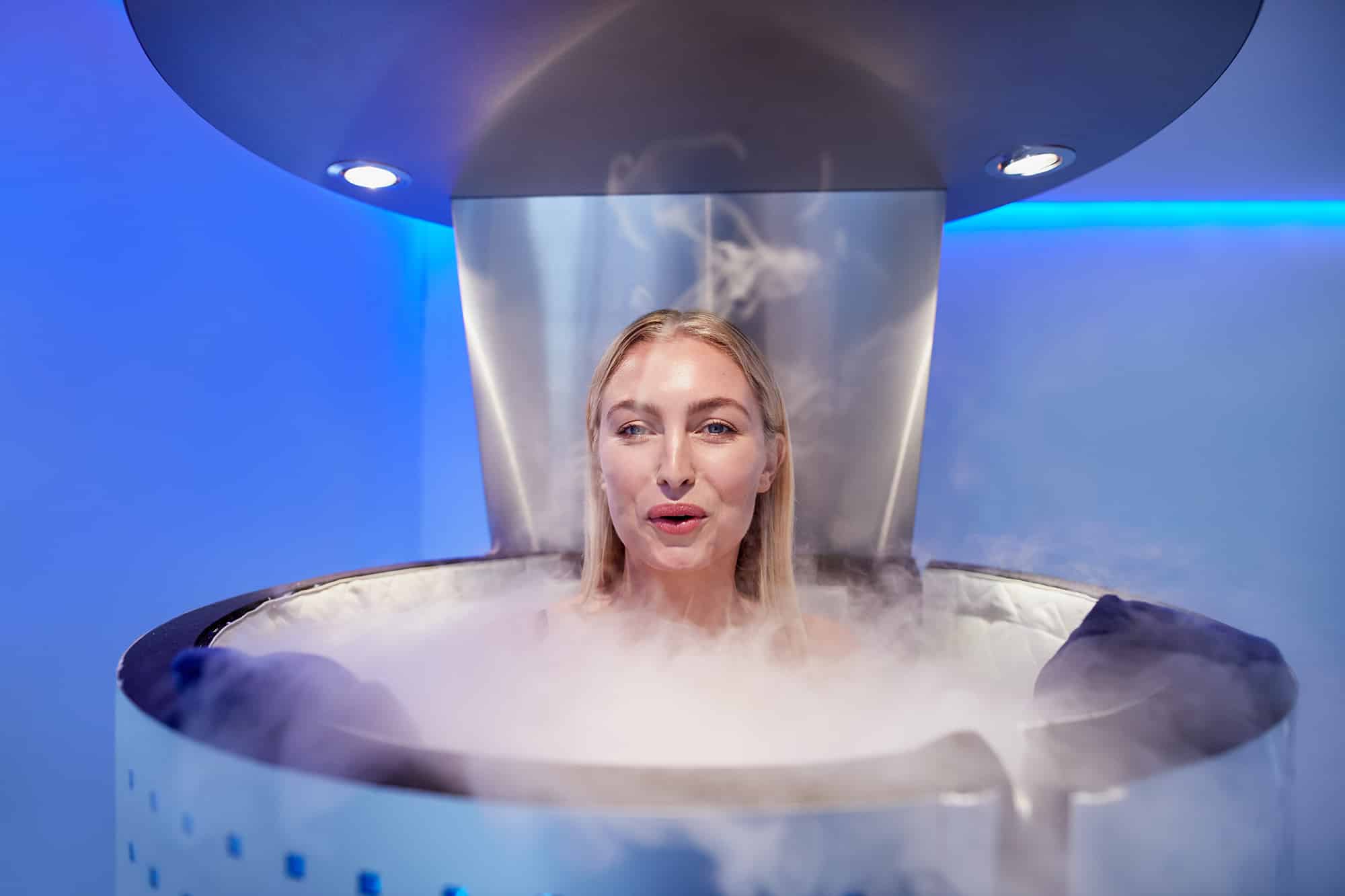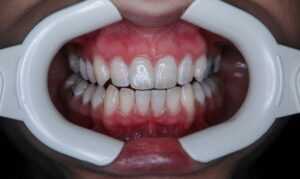Cryotherapy, or “cold therapy,” has become a popular health and wellness trend in recent years, attracting attention from athletes, celebrities, and everyday individuals seeking to optimize their physical and mental well-being. Whether you’re an elite athlete recovering from intense workouts or someone looking to reduce inflammation and improve skin health, cryotherapy offers a unique and scientifically backed approach to health improvement. But what exactly is cryotherapy, and what benefits does it provide?
In this article, we’ll dive deep into the science behind cryotherapy, explore the different types of cryotherapy treatments, and examine the wide range of health benefits that have made it a sought-after therapy worldwide.
What Is Cryotherapy?
Cryotherapy refers to the use of extreme cold to treat various health conditions, reduce inflammation, and promote overall wellness. The therapy involves exposing the body or a specific part of the body to extremely low temperatures, typically between -100°C to -150°C (-148°F to -238°F), for a short period of time, usually two to four minutes.
Cryotherapy can be performed in several forms:
- Whole-body cryotherapy (WBC): The most common and modern form, where the entire body is exposed to freezing temperatures inside a cryotherapy chamber.
- Localized cryotherapy: Where only a specific area of the body is treated with cold, typically using ice packs, cold air blasts, or cryo-wands.
- Ice baths or cold-water immersion: A traditional method where individuals immerse themselves in cold water to achieve therapeutic effects.
- Cryosurgery: A medical treatment that uses extreme cold to destroy abnormal tissues, such as tumors or warts.
Cryotherapy’s use in both sports recovery and aesthetic treatments has led to its rise in popularity. However, while it may seem like a new trend, the therapeutic use of cold has been practiced for centuries in various forms, from ancient Egyptians using cold compresses to reduce inflammation to modern-day athletes plunging into ice baths.
How Does Cryotherapy Work?
The effectiveness of cryotherapy lies in its ability to trigger physiological responses that help the body heal and recover. When exposed to extreme cold, the body initiates several responses designed to protect vital organs and systems. These responses lead to the health benefits that make cryotherapy so effective.
- Vasoconstriction and Vasodilation: When the body is exposed to extreme cold, vasoconstriction occurs, meaning the blood vessels narrow, restricting blood flow to the extremities. This response helps protect vital organs by directing blood flow inward. Once the body rewarms after cryotherapy, vasodilation occurs, meaning the blood vessels widen, promoting increased blood flow. This enhanced circulation helps deliver oxygen and nutrients to tissues, aiding in recovery and reducing inflammation.
- Release of Endorphins: Cold exposure triggers the release of endorphins, which are natural hormones that promote a sense of well-being, reduce pain, and help alleviate stress. This is one reason why cryotherapy is believed to improve mood and mental clarity.
- Reduced Inflammation: One of the most well-known benefits of cryotherapy is its ability to reduce inflammation. Cold therapy constricts blood vessels, which reduces blood flow to inflamed areas and helps to slow down cellular metabolism. This process lowers swelling and discomfort in areas affected by injury or chronic pain.
- Norepinephrine Release: Cryotherapy also triggers the release of norepinephrine, a hormone that plays a role in alertness, focus, and pain reduction. The increase in norepinephrine levels during cold exposure can help individuals feel more energized and focused after a cryotherapy session.
- Enhanced Metabolism: Cold exposure can stimulate brown fat activation, which is a type of fat that burns energy to generate heat. The activation of brown fat during cryotherapy increases metabolic rate and helps the body burn more calories even after the session has ended.
Types of Cryotherapy Treatments
There are several forms of cryotherapy, each with its own unique benefits and applications. While whole-body cryotherapy has gained the most attention, localized cryotherapy and ice baths are also common treatments. Here’s a breakdown of the different types:
1. Whole-Body Cryotherapy (WBC)
Whole-body cryotherapy is the most common form of modern cryotherapy and involves stepping into a chamber or cryosauna that exposes the entire body to extremely low temperatures for two to four minutes. The temperature in these chambers can drop as low as -150°C (-238°F). During the session, individuals wear minimal clothing—typically only undergarments, socks, gloves, and protective coverings for the ears, nose, and mouth to prevent frostbite.
Whole-body cryotherapy is widely used for sports recovery, chronic pain relief, mental clarity, and skin rejuvenation. Sessions are typically short and take place under supervision to ensure safety.
2. Localized Cryotherapy
Localized cryotherapy focuses on applying extreme cold to specific areas of the body, such as joints, muscles, or inflamed regions. This form of treatment is used to target problem areas directly, helping to reduce pain, inflammation, and discomfort.
Localized cryotherapy can be administered through:
- Cryo-wands: These handheld devices blast cold air or liquid nitrogen directly onto the target area.
- Ice packs or gel packs: Traditional methods of applying cold to a specific area.
- Cold air therapy machines: Devices that blow cold air at high speeds to rapidly cool specific areas.
This treatment is often used to treat sports injuries, arthritis, muscle pain, and even in aesthetic treatments to reduce puffiness and improve skin texture.
3. Ice Baths or Cold-Water Immersion
Ice baths or cold-water immersion involve submerging the body or a portion of the body in cold water, usually between 50°F to 59°F (10°C to 15°C), for around 10 to 15 minutes. This traditional method of cryotherapy is used by athletes to reduce muscle soreness, enhance recovery, and reduce the risk of injury following intense physical activity.
While not as extreme as whole-body cryotherapy, ice baths are still highly effective for reducing inflammation and muscle fatigue after strenuous workouts.
4. Cryosurgery
Cryosurgery is a medical procedure that uses extremely low temperatures to destroy abnormal or damaged tissues, such as tumors, lesions, or warts. This form of cryotherapy is widely used in dermatology, oncology, and gynecology for treating skin conditions, removing precancerous cells, and managing certain types of cancers.
Cryosurgery is typically performed using liquid nitrogen to freeze and destroy the target tissues. This method is often used in minor surgeries due to its ability to treat small, localized areas without requiring extensive incisions or invasive procedures.
What Is Cryotherapy Good For?
Cryotherapy offers a wide range of potential health benefits, from reducing inflammation and pain relief to boosting mood and improving skin health. Below are some of the most well-researched and popular benefits of cryotherapy:
1. Reducing Inflammation and Pain Relief
One of the primary reasons people seek cryotherapy is its ability to reduce inflammation and pain. Cold therapy has long been used to treat injuries, as it constricts blood vessels, reducing blood flow to injured areas and slowing down inflammatory processes. Cryotherapy helps reduce swelling, alleviate discomfort, and speed up recovery from both acute injuries and chronic conditions.
Cryotherapy has been particularly effective in treating conditions such as:
- Arthritis: By reducing inflammation in the joints, cryotherapy can relieve pain and improve mobility in individuals suffering from arthritis.
- Sports injuries: Athletes use cryotherapy to recover from injuries like sprains, strains, and muscle soreness.
- Chronic pain: Individuals with chronic conditions such as fibromyalgia or lower back pain may find relief through regular cryotherapy sessions.
2. Speeding Up Recovery in Athletes
Cryotherapy has become a go-to treatment for athletes looking to speed up recovery after intense workouts, competitions, or training sessions. The cold exposure helps reduce muscle soreness, minimize delayed onset muscle soreness (DOMS), and prevent injury by reducing inflammation in overworked muscles.
Whole-body cryotherapy, in particular, has been shown to reduce muscle recovery time, allowing athletes to return to training faster and perform at higher levels.
3. Improving Mood and Mental Health
Cold therapy has surprising benefits for mental health. Exposure to extreme cold can trigger the release of endorphins and norepinephrine, both of which contribute to a sense of well-being, reduce stress, and improve mood. For this reason, many people use cryotherapy to help manage symptoms of anxiety, depression, and even seasonal affective disorder (SAD).
Regular cryotherapy sessions have been reported to improve mental clarity, focus, and alertness, making it a valuable tool for enhancing cognitive function and reducing mental fatigue.
4. Boosting Metabolism and Weight Loss
Cryotherapy can also have a positive effect on metabolism and weight loss. When exposed to extreme cold, the body has to work harder to maintain its core temperature, which in turn increases calorie burn. This process, known as thermogenesis, activates brown fat, which burns calories to generate heat.
While cryotherapy alone is not a replacement for diet and exercise, regular sessions
can complement a weight-loss program by boosting metabolic activity and enhancing overall calorie expenditure.
5. Enhancing Skin Health and Anti-Aging Effects
Cryotherapy is also gaining popularity in the beauty and skincare industry due to its anti-aging and skin-rejuvenating effects. The cold exposure promotes collagen production, which is essential for maintaining skin elasticity and firmness. Increased collagen levels help reduce the appearance of fine lines, wrinkles, and sagging skin.
In addition to promoting collagen, cryotherapy improves blood circulation, which can enhance skin radiance and reduce the appearance of puffiness, acne, and dark circles under the eyes. Some spas and dermatology clinics offer cryofacials, where localized cryotherapy is applied to the face to achieve these skin-enhancing benefits.
6. Supporting Immune System Function
Cryotherapy may help to boost immune function by increasing blood circulation and promoting the production of white blood cells, which are responsible for fighting off infections and disease. The release of norepinephrine during cold exposure also enhances the body’s natural defenses, making it more efficient at combating inflammation and pathogens.
Some proponents believe that regular cryotherapy sessions can reduce the frequency of colds, flu, and other minor illnesses by strengthening the immune system, although more research is needed in this area.
7. Improving Sleep Quality
Many individuals report experiencing improved sleep quality after regular cryotherapy sessions. The body’s response to cold exposure, including the release of endorphins and norepinephrine, helps reduce stress and promotes a sense of relaxation. This may contribute to better sleep patterns and help individuals fall asleep more easily and stay asleep longer.
Better sleep quality can lead to improved overall health, including better mental clarity, reduced stress, and a stronger immune system.
Is Cryotherapy Safe?
While cryotherapy has many potential benefits, it’s important to note that it may not be suitable for everyone. Pregnant women, individuals with certain heart conditions, and those with severe cold sensitivities or Raynaud’s disease should avoid cryotherapy. Additionally, cryotherapy should always be performed under the supervision of trained professionals to avoid risks such as frostbite, burns, or cold shock.
It’s recommended to start with shorter sessions to assess how your body responds to the extreme cold and gradually increase the duration if needed.
Conclusion
Cryotherapy is a powerful and versatile treatment that offers a wide range of health benefits, from reducing inflammation and improving athletic recovery to enhancing mental clarity and promoting skin health. Whether you are seeking relief from chronic pain, a recovery boost for intense workouts, or a natural way to improve your mood and energy levels, cryotherapy provides a safe and scientifically-backed method for improving overall well-being.
While it’s essential to consult a healthcare professional before beginning any new therapy, especially if you have underlying health conditions, cryotherapy is a relatively safe and effective option for those looking to explore the benefits of cold therapy. Whether you try whole-body cryotherapy, localized treatments, or traditional ice baths, you’ll likely experience the refreshing and rejuvenating effects that have made cryotherapy such a popular wellness trend around the world.




